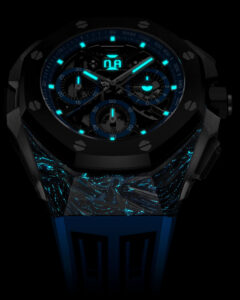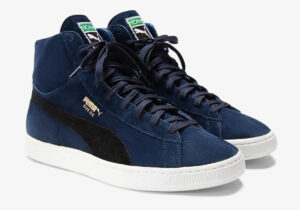Lipa stood alone under the soft halo of a skylight, framed by oil paintings worth millions and marble statues that haven’t blinked in centuries. But no one was looking at the art. They were looking at her — in Dilara Findikoglu’s embroidered “Napoleon” corset-and-trouser set, razor-cut and regal, paired with The Attico’s blade-sharp pumps and a Bottega Veneta clutch that whispered wealth rather than screamed it. In this moment, she wasn’t just a guest in a museum. She was the exhibit.
This isn’t new. But it’s becoming a movement.
Private museum photoshoots — part fashion spread, part cultural statement — have become the high-society version of a flex. For celebrities, these shoots are more than branding. They’re proof of access, taste, and power. The average person gets maybe a few quiet hours at The Met if they time it right. Lipa gets it closed down, styled, lit, and lens-ready. And she’s not alone.
The Power of the Setting
Museums offer a kind of immortality. The air smells of polish and preservation. The walls whisper history. So when an A-lister poses in a palace of antiquities or a contemporary gallery, it’s a calculated move. They’re aligning themselves with something bigger — legacy, genius, and aesthetic permanence. The fashion, the pose, the lighting — it’s not random. It’s composed. It’s modern portraiture.
This is where the composition becomes more than a photograph. It becomes editorial literature in visual form: the styling, the setting, the subtext. A private shoot in the Uffizi or the Louvre sends a message. “I don’t just wear couture. I belong among masterpieces.”
Beyond Instagram Flexing
On social media, luxury is abundant — or at least its image is. But exclusivity is the real currency. While anyone can stand in front of a famous painting, very few can turn it into a backdrop for a fashion editorial with no tourists in sight. Museum photoshoots aren’t about the clothes alone. They’re about securing a level of access that’s unavailable to the public.
This isn’t just about vanity. It’s also strategy. For stars like Zendaya, Timothée Chalamet, or Beyoncé, these shoots are part of a broader storytelling arc. They’re building narratives, reframing how pop culture sees them. They’re not just celebrities. They’re curators of their own mythologies. And what better place to sculpt a legacy than inside the temples of art history?
The New Collaboration: Fashion x Institution
This trend isn’t a one-sided invasion. Museums are playing along — and benefiting. These shoots bring relevance and attention to institutions that often struggle with public engagement. A single image of Rihanna in a sheer Maison Margiela gown inside a Baroque hall can generate more eyeballs (and foot traffic) than a full-page ad in Artforum.
What we’re witnessing is a new kind of cultural exchange. Museums lend their prestige. Celebrities lend their platform. And fashion becomes the conduit — the bridge between centuries-old artistry and current cultural capital.
In some cases, these shoots are part of explicit collaborations. Dior may co-sponsor a retrospective. Gucci might donate to museum preservation funds. It’s the same ecosystem of luxury that funds galas like the Met Ball — where fashion pays homage to art, while art quietly monetizes the exposure.
Who’s Wearing What, and Why It Matters
Clothes speak — and in these shoots, they shout. Lipa’s choice of Dilara Findikoglu isn’t just style. It’s politics. Findikoglu’s designs riff on power, colonial critique, and historic silhouettes with anarchic energy. The “Napoleon” set, with its subversive tailoring and military motifs, is a sartorial middle finger and love letter at once. Paired with Attico stilettos — blades of femininity — and Bottega’s soft-sculptural minimalism, the look is curated with precision.
Every element is part of the composition. It’s not just an outfit. It’s a commentary. The museum is the stage, the outfit is the thesis, and the subject is the message.
Editorial As Composition, Not Just Image
What makes these photos more than snapshots is how they’re executed. This isn’t a selfie with a marble bust. This is a full editorial production, rendered with cinematic attention. Lighting is controlled to enhance the texture of tapestries. Postures are styled to echo the poses of Renaissance portraits or Futurist sculptures. The narrative flows from fabric to frame.
It’s comprehensive composition — part homage, part disruption. Think of it like this: if a traditional editorial is fashion journalism, this is fashion literature. It doesn’t just show you what’s being worn. It tells you what it means. And in the best executions, it leaves you with questions: Who has the right to beauty? What does cultural stewardship look like in the influencer age? When does admiration become appropriation?
The Future of the Format
We’re likely just at the beginning of this intersection between high art and high fashion. As museums face economic pressure and celebrity culture continues to dominate media, their collaboration is inevitable. Already, we’re seeing emerging designers get museum shoots as a platform. Already, TikTokers are trying to replicate the look in local galleries.
But the true weight lies in intention. When it’s done right — not just as a vanity shoot, but as a well-thought-out fusion of history, politics, fashion, and setting — it elevates everyone. The celebrity becomes more than a star. The museum becomes more than a container. And the image becomes more than a post.
It becomes part of the archive.
Word
Lipa’s museum moment in Dilara wasn’t just a look. It was a layered statement — about fashion as rebellion, about cultural context, about image-making in the modern era. And it’s exactly this kind of rendering that reminds us: while art may hang on walls, its power lives in the spaces we choose to create — and who we let into them.
No comments yet.








